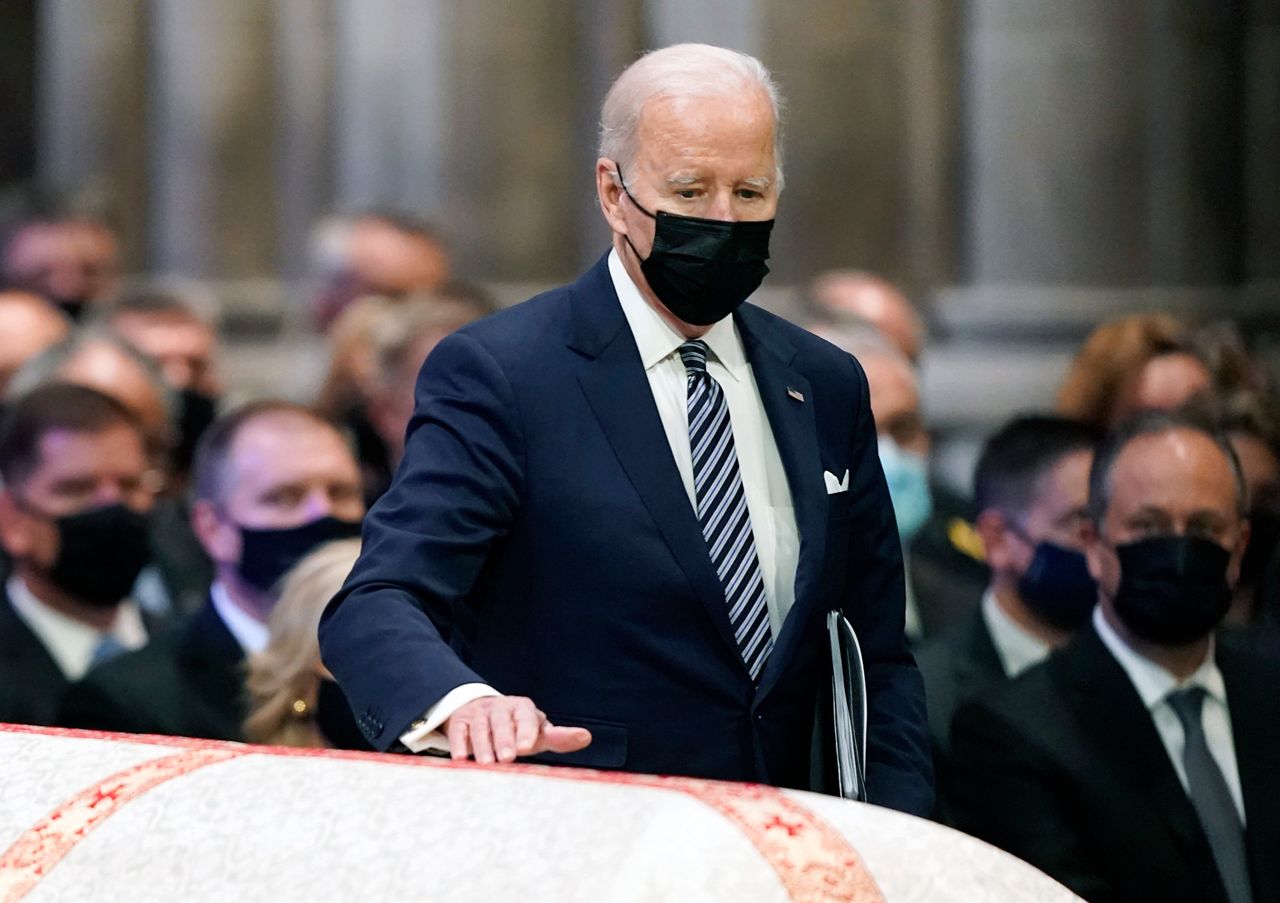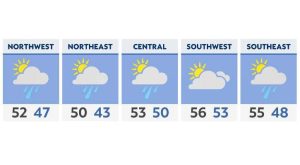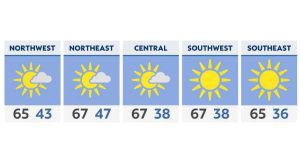Prices for U.S. consumers jumped 6.8% in November compared with a year earlier as surging costs for food, energy, housing and other items left Americans enduring their highest annual inflation rate since 1982.
What You Need To Know
- Prices for U.S. consumers jumped 6.8% in November compared with a year earlier, the highest annual inflation rate since 1982
- The Labor Department also reported Friday that from October to November, prices jumped 0.8%
- Fueling the inflation has been a mix of factors resulting from the swift rebound from the pandemic recession
- Republicans have seized upon rising inflation in an effort to criticize the president’s economic plans, but inflation is a complex global issue that cannot be solely blamed on the president
The Labor Department also reported Friday that from October to November, prices jumped 0.8%.
Inflation has been intensifying pressure on consumers, especially lower-income households and particularly for everyday necessities. It has also negated the higher wages many workers have received, complicated the Federal Reserve’s plans to reduce its aid for the economy and coincided with flagging public support for President Joe Biden.
Republicans have previously seized upon rising inflation in an effort to criticize Biden’s economic plans. But inflation is a complex, global issue, and not one that can be solely blamed on the president – though the White House did brace for the possibility of a high report on Thursday.
In a statement released Thursday about weekly jobless claims — the lowest such figure in more than five decades — President Joe Biden acknowledged that while the country’s jobs recovery “is one of the strongest ever,” the country has also struggled with rising consumer prices and supply chain issues.
“Even as we’ve built this incredible jobs and economic recovery, we have struggled – like virtually every other developed economy dealing with the pandemic – with rising prices and supply chain woes,” Biden wrote on Thursday, adding that the report would be “driven in part by energy prices and used car prices.”
“Fortunately, in the weeks since the data for tomorrow’s inflation report was collected, energy prices have dropped,” Biden continued. “The price of gas at the pump has already begun to fall nationally, and real pump prices in 20 states are now lower than the 20 year average. This week, natural gas prices are down more than 25% from their November average. In recent weeks, we are also beginning to see a decline in used car prices on the wholesale market which should translate into lower prices for Americans in the months ahead.”
The current average price for a regular gallon of gas is $3.33, according to the American Automobile Association, down nearly ten cents from a month ago, but much higher than last year.
Brian Deese, the president’s chief economic adviser, joined a White House press briefing on Thursday to tout “encouraging signs” in recent jobs reports while bracing for Friday’s report.
“Labor force participation has stayed steady … which suggests that people are coming back into the labor market,” Deese said.
“Because of the strength of our economic recovery, the strength of our labor market and the strength of wage increases … the labor market and the support we’ve provided over the course of the year, people are better positioned today to deal with” inflationary challenges, Deese said Thursday.
“That data is by definition backward-looking and so it won’t capture some recent price movements, particularly in the areas of energy,” Deese added.
Deese, the Director of the National Economic Council, pointed to drops in energy prices, particularly gasoline, in recent weeks.
“We’ve seen gas prices come down,” Deese said. “We’ve seen natural gas prices come down, we’ve seen we’ve seen real progress on sticking some of the supply chain bottlenecks that have been that persisted in our economy.”
Deese pledged that the Biden administration needs to do “everything that we can to address [price increases] directly.”
In his statement Thursday, Biden called for Congress to pass his Build Back Better agenda, which he says will help lower costs for Americans and address inflation.
“The information being released [Friday] on energy in November does not reflect today’s reality, and it does not reflect the expected price decreases in the weeks and months ahead, such as in the auto market,” Biden said in his statement. “We need to focus on concrete actions we can take to address elevated prices and to lower costs for American families – including by lowering prescription drug costs, health care costs, childcare costs and housing costs with my Build Back Better plan.”
Fueling the inflation has been a mix of factors resulting from the swift rebound from the pandemic recession: a flood of government stimulus, ultra-low rates engineered by the Fed and supply shortages at factories in the U.S and abroad. Manufacturers have been slowed by heavier-than-expected customer demand, COVID-related shutdowns and overwhelmed ports and freight yards.
Employers, struggling with worker shortages, have also been raising pay, and many of them have boosted prices to offset their higher labor costs, thereby adding to inflation.
The result has been price spikes for goods ranging from food and used vehicles to electronics, household furnishings and rental cars. The acceleration of prices, which began after the pandemic hit as Americans stuck at homes flooded factories with orders for goods, has spread to services, from apartment rents and restaurant meals to medical services and entertainment.
The persistence of high inflation has surprised the Fed, whose chair, Jerome Powell, had for months characterized inflation as only “transitory,” a short-term consequence of bottlenecked supply chains. Two weeks ago, though, Powell signaled a shift, implicitly acknowledging that high inflation has endured longer than he expected. He suggested that the Fed will likely act more quickly to phase out its ultra-low- rate policies than it had previously planned.
Some economists are holding out hope that inflation will peak in the coming months and then gradually ease and provide some relief for consumers. They note that supply shortages in some industries have begun to gradually ease. And while higher energy costs will continue to burden consumers in the coming months, Americans will likely be spared from earlier forecasts that energy prices would reach record highs over the winter.
Oil prices have been declining modestly and leading, in turn, to slightly lower gasoline prices. A gallon of gas is averaging $3.38, according to AAA, down from $3.42 a month ago.
Even more dramatically, natural gas prices have plummeted nearly 40% from a seven-year high reached in October. The result is that while average home heating costs will well exceed last year’s levels, they won’t rise as much as had been feared.
Food prices, too, could potentially ease as a result of sharp declines in corn and wheat prices from their highs earlier in the year.




